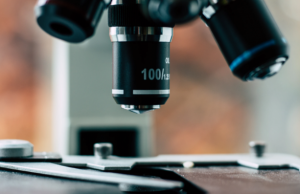Schools have had a tough time trying to adjust to the pandemic. A lot of subjects couldn’t be effectively transferred into a virtual classroom environment. Unfortunately, it would be foolish to assume that these subjects are now back on the curriculum as per usual since the schools have reopened. Life as normal has not returned just yet. Therefore, in the meantime, schools remain a significant source of infection risk for teachers, students, and all the school personnel.
There is a real challenge for teachers to make hands-on subjects covid-safe. It wouldn’t be a good idea to drop lessons such as music or PE completely because of health risks. Education serves many purposes. On the one hand, it ensures our children have the skills they need to pursue further education for their career prospects, but also to prepare for real life. While skills such as reading, writing, and counting will be essential, other more tangible subjects play a significant role in their personal growth. What can schools do to make learning safe in hands-on lessons?
They work with professional equipment
A lot of parents are concerned about chemistry and biology, as these subjects tend to involve manipulation by students as they perform experiments. How is the school lab safe in a post-pandemic world? The answer to the question is more complex than it appears. First of all, it is fair to remind ourselves that the lab provides a first-hand experience in a controlled and monitored environment. Teachers are present to provide the support and guidance our children need. Parents can expect schools to have introduced a range of lab-friendly disinfectants into the science department. This is designed to minimise the risk of infection through lingering germ presence on the surface of the equipment. Schools also rely on professionally designed equipment – Arrow Mixing Products is one of the lab brands in the industry, for instance – that can be fully sterilised and cleaned.
In addition, not specifically just in schools but in many places in society, the use of gloves as a preventative measure has increased hugely. How many of us now put on gloves before putting fuel in our cars? Whether it is in schools or every day living, I do think the use of gloves is here to stay, and sites such as unigloves can help you find the pair to best suit your needs.
They try to reduce sharing
Music is a crucial element of a child’s education. Indeed, music supports brain plasticity, encouraging creativity, memory, concentration, and stress-relief. Children who receive music education are more likely to improve their performance in other subjects, including maths and English. However, music lessons could contribute to the spread of viruses and infections without an appropriate strategy. What can music teachers do to make lessons covid-safe? School music instruments need to be monitored and disinfected closely. Ideally, whenever relevant, a child should be assigned an instrument so that it can’t be shared with others for the foreseeable future. Singing arrangements also need to reduce the risk of droplets spread through the air.
They learn tips from public places
PPE classes can turn to public gym businesses for tips and tricks on disinfecting the equipment. It can be helpful to ensure that students are fully aware of the risk of spreading germs during sports classes. Teachers can introduce disinfecting steps that will encompass both pupils’ and cleaning staff duties. It is unlikely that all children will be wearing face masks during PPE lessons even though it would be beneficial. But teachers can schedule activities that reduce physical contacts and face-to-face interactions without affecting PPE performance and results.
Understandably, parents will be worried about how physical subjects can affect children’s health. However, hands-on classes are more likely to encourage high covid-safety protocols, ensuring that everyone stays safe and healthy. In fact, other classes may bring higher health risks as they might not apply the same germ-reducing strategies.



No Comments